Ged Cusack's Blog, page 2
December 18, 2017
How to Improve Your Mental Health as A Solopreneur (3 Simple Tips)
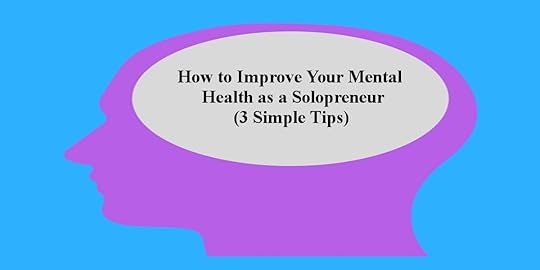 A 2014 study showed that more than 53 million (34%) of Americans where Freelancers and this number is expected to grow to 50% by 2020. More and more of these freelancers are flying solo (solopreneurs).
A 2014 study showed that more than 53 million (34%) of Americans where Freelancers and this number is expected to grow to 50% by 2020. More and more of these freelancers are flying solo (solopreneurs).
Although more and more people are choosing to switch to solopreneurs, many of them are unaware of the potential impacts on their mental health.
There are lots of reasons why individuals choose to make the change and two of the primary reasons are the perceived benefits of working alone or not working for a boss.
You’ve no doubt taken for granted your daily interactions with your former colleagues or students. As you start out on your freelancing journey (especially for online solopreneurs), you need to realize that you may have fewer reasons to physically meet other people.
Unforeseen issues such as loneliness need to be factored into your business plans.
1. Schedule Some Downtime (Relaxation) and Get Out of The house
 As an employee, you may be used to having the weekend off and not feeling guilty (if you have earned money during the week). When you first start out on your solopreneurial journey you may not earn much during the week and so feel guilty not working at the weekend.
As an employee, you may be used to having the weekend off and not feeling guilty (if you have earned money during the week). When you first start out on your solopreneurial journey you may not earn much during the week and so feel guilty not working at the weekend.
You need to find ways to relax and recharge (they don’t have to cost much money). Although there may initially be a requirement to work extra hours on your business, you must schedule some downtime.
The old proverb “All work and no play makes Jack a dull boy” is just as relevant to females. If you don’t factor in some downtime you may start to resent your choice to stop being an employee.
Human Needs: Company
Maslow’s Hierarchy of needs shows that company is one of the human needs that we require. As a solopreneur, there is a tendency to work long hours from home. This can limit your social interactions with others.
The more that we move towards this home-based lifestyle the greater the potential for loneliness and unhappiness (that can lead to deeper mental health issues).
Ensure that you factor in some human interaction when planning your downtime. Don’t just rely on the TV or the internet as companions.
2. Build a Comfortable Work Environment
 We may have been sold the image of a solopreneur working from a laptop in a coffee shop but in reality, lots of freelancers work unsociable hours in their home.
We may have been sold the image of a solopreneur working from a laptop in a coffee shop but in reality, lots of freelancers work unsociable hours in their home.
Your working environment can have a large impact on your physical and mental health, so it is important that you endeavour to make it as hospitable as possible.
Your living situation may not allow you to have a lavishly furnished separate office space but there are various ways that you can optimize your workspace.
Reducing physical and mental stress or strains is one way to contribute to your mental well-being.
Noise Cancelling Headphones – Noise cancelling headphones are not a necessity but if you are more comfortable working in a quieter atmosphere, a set of fair quality headphones can be purchased at a reasonable price.
A Suitable Desk – Whether you prefer to work sitting down or at a stand-up desk, there are cost-effective ways to meet your needs. A piece of timber placed on top of two (double drawer) filing cabinets can form a desk to fit irregular office spaces. An old bookshelf can be modified into a stand-up desk.
Keyboards and mouses – Using a separate keyboard and mouse instead of a laptops integral keyboard can help reduce RSI (Repetitive Strain Injury). Reducing physical injury and pain.
A Suitable Chair – If you have a stand-up desk you may wish to use a bar stool as a rest for lengthy work sessions. An ergonomic office type chair can provide optimum support, limiting physical strain and pain from bad posture. With the flourishing second-hand market in today’s world, you can pick up a suitable chair at a reasonable price
Backup systems – You may prefer to back up your work to an external hard drive or the cloud. Whatever your medium of preference, constantly backing up your data will reduce the mental stress of losing work you’ve spent precious time producing.
3. Prioritize Your Diet and Exercise
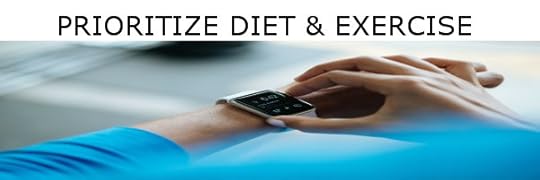 Whatever our situation, life sometimes gets in the way of a healthy diet and regular exercise. If you don’t take care of your physical health it will impact on your mental health.
Whatever our situation, life sometimes gets in the way of a healthy diet and regular exercise. If you don’t take care of your physical health it will impact on your mental health.
When you are first starting out as a solopreneur there is a tendency to focus all of your energy on your new venture, letting exercise go by the wayside and eating haphazardly.
You are no doubt scheduling in your work activities so there is no reason not to schedule your eating and exercise activities.
There are lots of ways to ensure that you don’t live off takeaway food but here are just a couple:
Batching food – Cooking food in bulk and then freezing to individual meals can be can be a great way of ensuring that you have nutritional foods readily on hand.
Nuts as snacks – Having a container of Nuts or other healthy snacks on hand can reduce the tendency to eat junk foods.
Exercising doesn’t mean that you need to join an expensive gym:
Free Resources – With Youtube workout routines and the mass of other online resources, it doesn’t have to cost money to exercise.
Flexible Timetables – Working from home and having control of your work schedule means that you can decide when and where to exercise.
Solopreneur Wrap-Up
If you maintain your physical health it will contribute to your mental wellbeing. When you are committing to the switch from an employee to a solopreneur, your health needs to be factored in.
By following these three simple steps your mental health can benefit substantially:
Schedule Some Downtime.
Build a Comfortable Work Environment.
Prioritize your Diet and Exercise.
The post How to Improve Your Mental Health as A Solopreneur (3 Simple Tips) appeared first on "Author Ged" and his Freelance Writing Services.
December 17, 2017
The Top 5 Tips to a Successful Book Launch on Amazon KDP
 Do you know the difference between having your book available for sale (listed) on Amazon, with successfully launching your book?
Do you know the difference between having your book available for sale (listed) on Amazon, with successfully launching your book?
Amazon Kindle Direct Publishing (KDP) is a free service that allows independent authors to create their own digital books and have them available to sell on Amazon.com. Publishing your book on KDP allows your book to be available on any of the other international Amazon platforms at the same time as Amazon.com.
It might seem a bit clinical but once you look at your book as a product, you realize that it takes more than just manufacturing something and putting it on a shelf for it to sell.
1. The First Thirty Days of Your Amazon Book Listing are Key to a Successful Launch
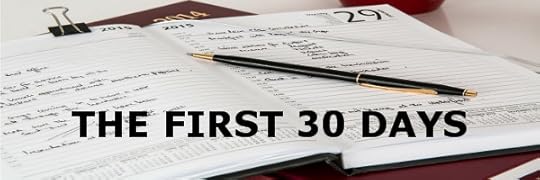 When your book first goes live on Amazon it starts an unofficial countdown period of around thirty days. This period is not listed anywhere on Amazon but it is widely accepted by Amazon sellers.
When your book first goes live on Amazon it starts an unofficial countdown period of around thirty days. This period is not listed anywhere on Amazon but it is widely accepted by Amazon sellers.
This initial launch period is often referred to in forums as the honeymoon period. Basically, when you first start selling your book on Amazon, it is given an initial chance to get established by the Amazon algorithm.
The Amazon Algorithm and the Technical Stuff
The Amazon algorithm is a mathematical formula that combines various pieces of sales data of your book in order to give it a BSR (Best Seller Ranking).
The numerous categories on Amazon are just like the departments or aisles in any store. From Laundry Detergent and Diapers to Books, every item, in every category on Amazon has a BSR.
During this initial period your books BSR will start off low but if you don’t start to sell books, the algorithm will start to penalize you and give you a higher ranking. You are in effect accruing penalty points.
Why a Lower Seller Ranking is better than a Higher One
Terms such as Algorithm and Seller Ranking can seem very technical to first-time authors but the basic premise is that the more sales and success your book gathers, the lower the ranking your book will be allocated.
Visualize your book’s seller ranking like the position in any other competition.
First place receives a better prize than third place, hence it is better to be ranked with the lower number one (or first) than the higher number three (or third).
Amazon gives preferential treatment to products with a lower BSR by making them more visible in search results. Now you start to see why you should view your book as a product!
2. Schedule and Track Your Launch
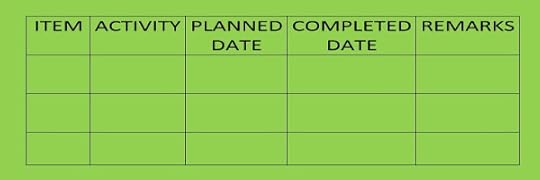 Your launch is important so you need to schedule it, manage it and track it.
Your launch is important so you need to schedule it, manage it and track it.
You may have a preference for using Google worksheets, Excel spreadsheets or even just a whiteboard.
Whatever tool you prefer to use, it is important that you set up your tracking system immediately and continually update this system.
Your Launch Needs Planning Even Before You List Your Book
As an author, you are focused on writing your book and may assume that you can look at marketing your book once it’s live.
Because you only have a limited window of opportunity for your book to gain its initial sales traction, it is important that you have a scheduled plan in place before your book goes live.
Most of your launch activities will require advance planning, such as:
The date your book will be live.
The date of your book promotions.
The date to submit to book promotion websites.
The date to start your first Amazon Ad.
There will be lots more activities to consider, so set up a plan and begin tracking it from the start. If you don’t keep a track of your plan it can quickly become a mess.
3. Optimize Your Book Content, Your Book Description and Your Bio
 Check Your Book Content
Check Your Book ContentEven the most enthusiastic authors can feel jaded by the time their book is ready to publish, this is the time to be diligent with your checks of the final text and layout.
Once your book is live, you should be the first to buy and download a copy to your Kindle.
The digital proof-readers on KDP are adequate but you want to see how your readers will experience your book before you start promoting it.
Ideally, you may wish to list your book for $0.99 for the first week or so to solicit reviews at this lower price, buy a copy and at the same time earn your first royalties.
Optimize Your Book Description
The term product listing can also be used to define the description of any item (including books) being sold on Amazon.
Your book description (or listing) is the information about your book that is listed on Amazon. The Sales funnel for a book starts with the book cover and the title and should you manage to catch a reader’s attention the next place they predominantly look is the book description.
Analyzing the book descriptions of some best-selling authors it is apparent that their book descriptions contain only a couple of paragraphs of plain text. As these authors have brand recognition their promotion companies can get away with less effort on their book description.
As an independent author you want to use every advantage at your disposal, so treat your book description like an Ad to get the reader’s attention.
Bold Text, Headings, bullet points and white space are all elements that can make your book listing stand out.
Don’t worry if you have no idea how to use HTML (Hyper Text Markup Language) or any other computer code. There are free tools out there that allow you to input plain text and format it like any traditional word processing software and (automatically) provide you with the code to cut and paste into the description box on KDP.
I highly recommend Dave Chesson’s Book Description Generator Tool
You Need 100, 200 and 300 Word Synopses of Your Book
A synopsis of your book is not always the same as your book description
While you are writing your book description it is a good idea to create several options for the synopsis of your book (Ideally around 100,200 and 300 words in length).
Creating these synopses whilst you are in a descriptive headspace will save you time later, when you need them for book promotion sites. Some sites will automatically draw your description from Amazon but others require a different synopsis for their site.
4. Reviews, Reviews, Reviews
 Authors like many artists tend to have their own views about reviews of their work.
Authors like many artists tend to have their own views about reviews of their work.
If you are writing just for the joy of writing then reviews may not matter to you but if you intend to sell books you NEED reviews.
Reviews serve several purposes for your book but the two main points to bear in mind are:
Most readers are looking for validation that a book is worth the commitment of their time and to some extent their money. In a world full of things vying for our attention, we subconsciously decide whether to give something a second glance or to move on. We expect to see reviews before we commit to a hotel or restaurant (or almost any other experience), so seeing a book with no reviews makes us uncomfortable.
The number of reviews a book receives is one of the elements that the Amazon algorithm uses to determine the BSR.
Amazon Review Guidelines
Amazon relies on customer confidence in their systems so they have specific guidelines and policies in place. These policies are designed to ensure that their review system is not manipulated by unscrupulous people.
You may have read lots of scary stories on social media of authors having their reviews ripped off Amazon (or their Amazon listing suspended) because they had violated the guidelines.
Most of the analysis of the reviews are done by computer algorithms and although they can make mistakes, if you stick to the guidelines any mistakes in the system can usually be rectified.
Don’t be scared to ask for reviews, just abide by the guidelines. Leaving a line in the back of your book such as “If you enjoyed this book please feel free to leave an honest review on Amazon” is acceptable.
Amazons review guidelines state that they don’t allow individuals who share a household with the author or close friends of an author to leave a review. With Globalization and social media, it is becoming more and more difficult to find people who you have no links with.
Don’t become paranoid that someone who is following you on twitter will leave a review and Amazon will pull your book from their digital shelves. Building a tribe of followers or a group of beta readers in preparation for your book completion are typical ways of preparing to sell your book.
If you already have an email list or a large social media following then let them know in advance that your book is on its way and tell them again once it’s live.
Lots of readers are unsure what to write in a review so feel free to provide some help in your communications Tips for reviewing books.
Optimum Review Numbers
It’s an accepted fact that reviews attract more reviews but it can become a bit of a chicken and egg issue. If you don’t have reviews, how can you get reviews and how many reviews do you need to start with:
Assume that not everyone will leave a review (no matter how many times they are asked) so promote your book as much as you can.
Apply extra attention to activities to gather reviews at the early stages of your launch. Ideally, aim for ten reviews before you launch your promotion but at a minimum try to get five reviews.
Although there is no industry standard it is a widely supported theory that multiples of ten reviews have a psychological effect on readers.
Ten Reviews will produce a higher number of downloads from a free giveaway.
Twenty reviews is the minimum number of reviews you should have for your book before you start an Amazon ad campaign on your book.
The basic premise is that the more multiples of ten reviews your book receives, the more it will continue to gain more reviews.
5. Maximize your promotions
 KDP Select
KDP SelectMost independent (indie) authors initially register their book with the KDP Select program. Although this program ties the author into a 90 day period of publishing exclusivity (where you can only publish the digital version of that specific book through KDP), it allows benefits such as promotions through Free Giveaways and countdown deals.
These promotions have the potential to give your new book exposure.
Use Promotional Websites
Although Amazon allows you to setup Free Giveaways and Countdown deals (on your book’s KDP Select listing) the impetus is on you to get the word out about those promotions.
One of the main ways to let the universe know about your promotion is through websites and social media platforms.
Most of the promotional sites such as askdavid, reading deals, free kindle books offer to publicize your promotion for free. Sites that don’t offer a paid option for (a guaranteeing) publicising your book promotion tend to charge a minimal amount.
These sites have varying criteria for submission of your book promotion, some sites require a minimum number of reviews (usually five reviews), some sites require a certain notice period prior to the promotion (ranging from 24 hours to ten days), some sites require a Book Synopsis (different to the book description of the Amazon book listing) and others require a short author biography.
Due to the ever-growing number of promotional sites and the need to get maximum exposure for your promotion it is critical that you use your launch tracker to schedule and monitor your submissions to these sites.
Final Notes and Tying It All Together
As an independent author, the work of writing doesn’t stop once your book is published. There is a saying in writing that “once your book is 90% complete, you are almost half the way there.”
You have now created a product and to ensure a successful launch of that product you need to schedule your process in advance and track your progress.
You need to have a plan and schedule your launch around the first thirty days that your book is published.
Preparing elements such as book synopsis before your book is live on Amazon can save you a great deal of stress come the day of publication.
If you are unsure of the best way to create a book launch you may want to read my book on How to choose a Writing coach.
The post The Top 5 Tips to a Successful Book Launch on Amazon KDP appeared first on "Author Ged" and his Freelance Writing Services.
Bitcoins and Blockchains: The 3 Things That You Need to Know!
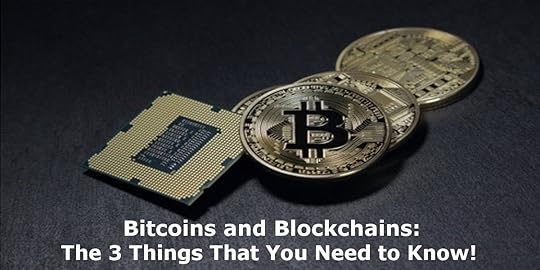 Between November 11th, 2017 and December 11th, 2017 the value of one Bitcoin unit rose from $ 6,544.18 to $15,241.99.
Between November 11th, 2017 and December 11th, 2017 the value of one Bitcoin unit rose from $ 6,544.18 to $15,241.99.
In the early days of the internet, the general public was slow to understand the new technology and all of the new terms and phrases associated with it.
In today’s tech-savvy world you can’t afford to stay ignorant about Blockchain and cryptocurrencies.
New jargon such as cryptocurrencies can seem futuristic and frightening to the uninformed so it is important that we reveal that there is nothing to be afraid of.
1. Bitcoin is Mined Not Printed
 When you think of traditional mining you probably envisage someone digging large quantities of coal or ore out of the ground, so that it can be refined to a more useful product.
When you think of traditional mining you probably envisage someone digging large quantities of coal or ore out of the ground, so that it can be refined to a more useful product.
Cryptocurrencies such as Bitcoin are mined in a different process. By solving extremely complex algorithms (mathematical equations) you can earn units of some cryptocurrencies.
In the Gold rush days of the 1940’s anyone with a pick and shovel had the potential to mine for Gold.
Today anyone with the correct mining software and enough computer hardware has the potential to mine for bitcoin.
Although anyone could mine for Bitcoin it is not as simple as installing an App on your phone and having it run in the background.
Although there are tutorials out there to talk you through the hardware and software requirements, if you decide to mine for cryptocurrencies you will have to take into account the business running costs of your power supply and other extras.
The Bitcoin System is Creating More Bitcoins. What Stops Bitcoins Suddenly Being Worthless?
Although bitcoins are generated through this system of algorithms, the system has been set up so that it is actually producing the coins at a slower and slower rate and will eventually cap out at a maximum world distribution of 21 million units of bitcoin.
Unlike national currencies that can just be printed in larger and larger quantities by a specific country, the cap set on bitcoins means that they are less likely to be susceptible to being devalued through inflation.
In some countries where their own economies are viewed as unstable, Bitcoin could actually be seen as a safer alternative to their own national currency.
2. There is No Central Bank of Bitcoin or Any Other Cryptocurrency
 Unlike a simple currency or credit card payment that has to be verified by a company or country, cryptocurrencies are part of a decentralized system using Blockchain.
Unlike a simple currency or credit card payment that has to be verified by a company or country, cryptocurrencies are part of a decentralized system using Blockchain.
Blockchain technology refers to digital blocks of information that are linked together (hence the term chain, to infer links) using a system of maths called cryptography.
These blocks of information are transmitted to receivers/transmitters called “nodes“ who transmit the information instantly to all the other nodes that they are linked to.
Because the Blockchain process shares information across a huge network of personal computers it is not only decentralized but distributed making it harder for the system to be compromised.
All This Talk of Blocks and Nodes Sounds Really Confusing?
Just as you don’t have to be able to write computer code to send an email or a text on your phone, you don’t need to understand all of the intricacies of how the mathematics of cryptography secures the information.
Because a large number of the nodes need to verify the information before it is accepted it ensures that the information cannot be changed or counterfeited.
In simple terms, unlike paper currencies that can be counterfeited and used more than once, the Blockchain system has safeguards in place. These safeguards know when a currency has been transferred and stop it being used more than once.
3. Bitcoin is Not the Only Cryptocurrency
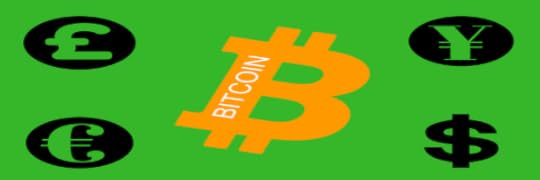 As at December 12th, 2017 there were over 1300 cryptocurrencies
As at December 12th, 2017 there were over 1300 cryptocurrencies
Although there are over 1300 cryptocurrencies, just like traditional currencies not all cryptocurrencies are created equal.
In order for any currency to have value it needs to be accepted by others in trade, the term liquidity (i.e. its ability to flow) can be used to refer to the ability to trade a currency.
Before investing in any of the specific cryptocurrencies you should consider various factors such as the liquidity, the value of one unit of the currency and the Market Capitalization (Market Cap) of that currency.
The Market Cap of a company refers to the value of all of the outstanding shares (as calculated by multiplying the number of shares by the current market value of one share).
If a company has 100,000 shares outstanding and the current market value is $5 a share, then the market cap of the company is $500,000
The Market Cap of a cryptocurrency is calculated in a similar way to that of a Company.
The circulating supply (the number of units available to trade) of that currency is multiplied by the current market price of one unit of that currency.
Simplified this means that if Bitcoin was at a current market value of $10,000 per unit and there were 1,000 units of bitcoin circulating around the world, the Market Cap of Bitcoin would be $10,000,000.
It is worth noting that although Bitcoin is not the only cryptocurrency its market cap is more than twice that of the combined total market cap of the next twelve cryptocurrencies by value.
Is The Rise of Cryptocurrencies The Next Tech Bubble?
There are various opinions as to the future in the surge of bitcoin and other cryptocurrencies
These blocks in the Blockchain system are more flexible than a basic currency transaction. They can be programmed with more information than just the value of a currency.
Currencies such as Etherum are actually encoded with smart contracts and although some of the faster-growing currencies may not maintain their value long term, some of the other currencies may have more potential.
Just like any financial decision, an investment in cryptocurrencies needs to be monitored.
As a rule of thumb, the more volatile an investment, the more quickly you can make (or lose) funds and the more closely it needs to be monitored!
The Blockchain Wrap Up
Although Bitcoin and other cryptocurrencies may seem complicated to the layman, we should not be scared of things that we do not understand.
New technological advancements are continually being discovered and we need to educate ourselves.
Cryptocurrencies provide investment and income opportunities but like any other investment, you need to ensure that you understand what you are doing before committing time and money.
Although they are referred to as cryptocurrencies, the blocks in Blockchain have the potential for much more than the exchange of simple currencies.
Embracing education will help dispel your fear.
The post Bitcoins and Blockchains: The 3 Things That You Need to Know! appeared first on Freedom Books and Freelance Writing Services.



